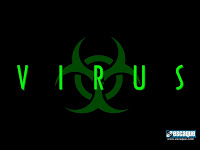
 by Brian Bradshaw
by Brian BradshawAt the Consumer Electronics Show in Las Vegas this year, the biggest hit was Sony, with an OLED (organic light emitting diode) display. The new 11" Sony TV is called the "XEL-1". It's very thin (1/10") and sells for $2500. Sony also displayed a 27" prototype OLED model, but no word on availability (or price). Other companies, Samsung, Toshiba, Matsushita (Panasonic), and others are investing hundreds of millions of dollars, trying to develop this promising technology. Toshiba plans to sell a 30" OLED display in 2009. Kodak holds a bunch of patents in OLED technology. Manufacturers will be required to pay a licensing fee to Kodak for every OLED TV sold.
There is a lot of money to be made. According to DisplaySearch, in 2007, the market for LCD TVs was estimated at $27.4 billion, while the market for plasma TVs was estimated at $7.5 billion. An OLED TV that was cost competitive would likely get a significant share of this market. According to iSuppli, the current market for OLED devices is a little more than a half-billion dollars per year. Samsung currently has a 70% market share.
OLED displays have already used for some time in digital cameras, cell phones and other devices with relatively small panels, because they are very energy efficient, which is very important in portable devices. But cost and technology problems have prevented them from being used in larger equipment such as HDTVs or computer monitors.
A significant benefit of OLED displays over traditional liquid crystal displays (LCDs) is that OLEDs do not require a backlight to function. Because of this, they draw much less power. And because there is no backlight, an OLED display is much thinner than an LCD display. In theory, OLED displays can be more efficiently manufactured than LCD or plasma displays, meaning that they should not be as expensive. Remember that the first large LCD and Plasma displays were much more expensive when they were first introduced.
One of the problems that has limited OLED use was that the blue OLED technology had a short lifetime. A new type of blue LED, the "PHOLED", has a 20,000-hour lifetime (20-25 years of normal TV use).
OLED Display Traits:
Power Efficiency
Very Thin and Light-Weight, 1/4" or less
Better Brightness than LCD
Wide Viewing Angle (~ 160 degree viewing angle)
Excellent Contrast (> 1,000,000:1)
Once developed the Manufacturing Process should be Inexpensive (process similar to ink-jet printing)
Very Large Displays are Possible (> 100 inch)
Response is better (good for moving images like Sports)
If the OLED does not live up to its promise, it will not be the first HDTV display to do so. Remember the surface-conduction electron-emitter display (SED TV)? Toshiba and Canon were ready to go into production, but patent disputes with a company called Nano-Proprietary killed the technology. That probably won't happen this time. The main obstacle will be the manufacturing process. If units can be manufactured cost-competitively with LCD and Plasma, it will get very interesting. However, it will be a few years before we get to that point.
About the AuthorAbout the Author: Brian Bradshaw is a Certified Technical Specialist (InfoComm CTS). Areas of expertise include Video, Audio, Computation, HDTV, Satellite Systems, and Communications. He has a communications technology business in Plano, Texas (Dallas). More information can be found at his Website.
Save gas! Convert your car to burn water.














